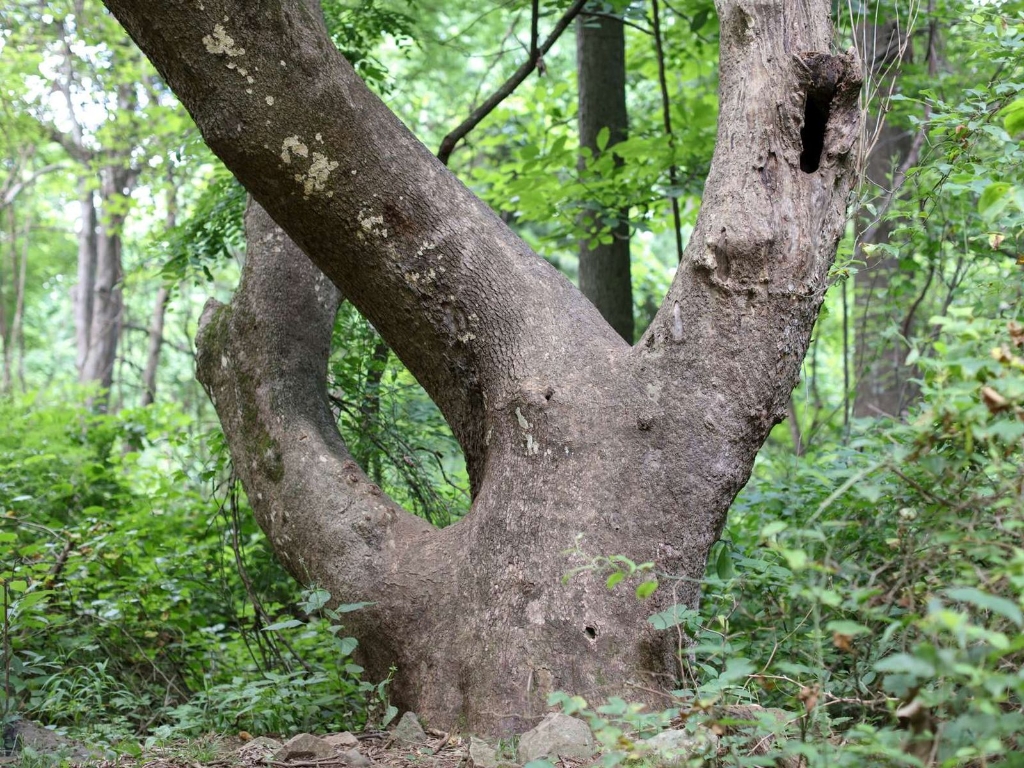
When Lemuel Fox Jr. walked here with Park Rangers in 1976 he told them that when he was a young man in the 1920s he once attached a windmill to this tree. "[The sycamore] was the only tree on this hill then," Lemuel said, "All the rest of it was cleared from here."
Most of the older growth forest was cut down long ago to make way for farmland in the 1800s and early 1900s. Certain trees, maybe a tall red oak here, a white pine over there, or this sycamore before you were spared. How would you decide when to leave a tree be? Would you be after the shade it could provide, or maybe need it as a landmark, or maybe even just decide that you liked it the way it was? For all the ways this land has changed since Lemuel played and worked here in his youth, this tree is a constant. This tree has witnessed the removal of the old forest and the growth of a new forest in its stead. In the middle, this tree was a part of the daily life of the Fox family who lived just up the road.
Fostering Wilderness
Much of the wilderness in Shenandoah follows the story just told. The mention of wilderness might conjure up images of places so expansive that no person has ever stepped on the same ground twice, or a place so remote that it is free of the impacts of human industry. Shenandoah's wilderness is not these things.
The wilderness that surrounds you, and the nearly 80,000 acres of federally designated wilderness in the Park, exist as wilderness because people decided to make it so. Early park managers advocated for reforestation and creating a place with a natural aesthetic; they wanted it to look like a beautiful forest. To those ends, the Civilian Conservation Corps maintained nurseries with Table Mountain pine, pitch pine, bittersweet, Virginia creeper, and dogwood, just to name a few. The CCC planted trees and other vegetation in areas that had previously been cleared for farming or grazing livestock. When left to nature, black locusts, sassafras, and pines are the first trees to take over, soon to be followed by longer-lived species like oaks and hickories.
Today, wilderness in the Park is crucial habitat to many plants and animals, along with providing recreational opportunities for people who may not be able to enjoy quiet mountain trails anywhere else. This is why Shenandoah National Park exists. This forest that surrounds you here is something to be cherished. Likewise, the family that lived and labored here during another time should not be forgotten.
Is there something we missed for this itinerary?
Itineraries across USA


















































